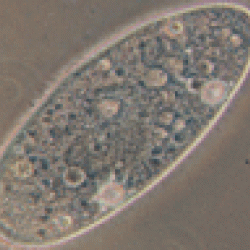Source Institutions
Source Institutions
Add to list Go to activity
Activity link broken? See if it's at the internet archive

This laboratory activity helps learners understand the concept of biological succession by simulating the process in a microenvironment with various protozoans. By manipulating environmental factors such as temperature, light, and food, learners are able to see in a matter of weeks the results of change that can take years in larger ecosystems in nature.
- 10 to 30 minutes
- 1 to 12 months
- Over $20 per group of students
- Ages 14 - 18
- Activity, Experiment/Lab Activity, Lesson/Lesson Plan
- English
Quick Guide
Materials List (per group of students)
- Medium size culture dishes - 6
- Boiled pond or spring water
- Droppers - 6
- Cooked wheat grain
- Stereomicroscope
- Microscope (compound light)
- Glass slides
- Cover slips
- Graph paper
- Paramecium culture
- Mixed rotifer culture
- Blepharisma culture
- Eudorina culture
- Peranema culture
- Euglena culture
- Amoeba culture
Subjects
-
Life Sciences
-
Diversity of Life
- Viruses and Bacteria
- Protists and Fungi
-
Ecology
- Ecosystems
- Populations
-
Diversity of Life
-
Mathematics
-
Data Analysis and Probability
- Data Analysis
- Data Collection
-
Data Analysis and Probability
-
The Nature of Science
-
The Scientific Process
- Conducting Investigations
- Gathering Data
- Formulating Explanations
- Communicating Results
-
The Scientific Process
Informal Categories
- Nature and Environment
Audience
To use this activity, learners need to:
- see
- touch
Learning styles supported:
- Involves teamwork and communication skills
- Involves hands-on or lab activities
Other
This resource is part of:
Access Rights:
- Free access
By:
- Deal, Sharon
Rights:
- All rights reserved, Access Excellence @ the National Health Museum, 2009
